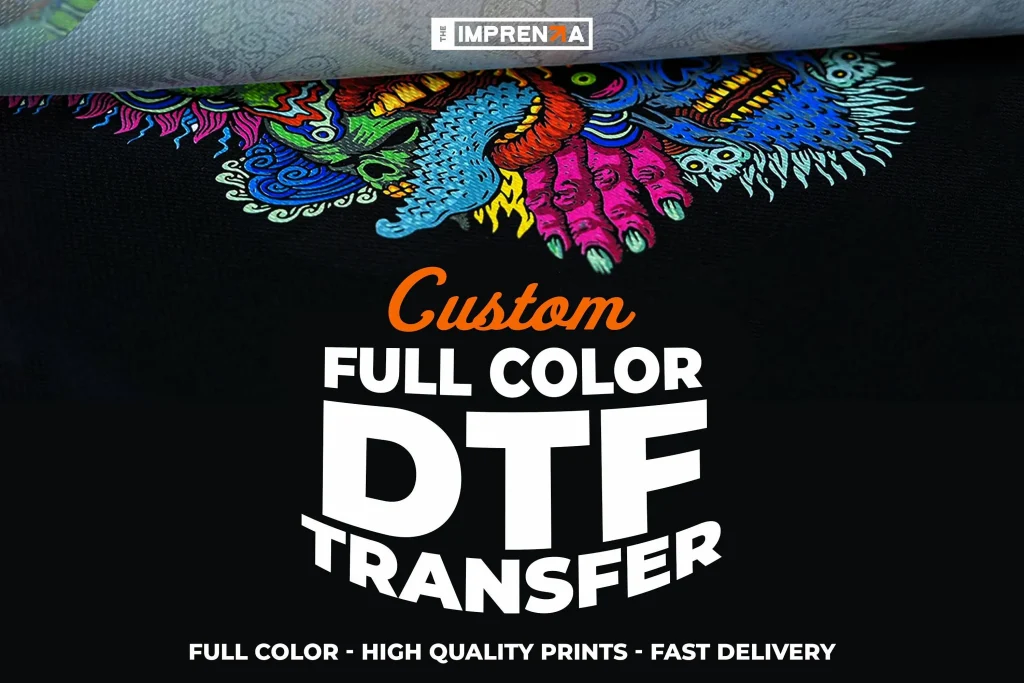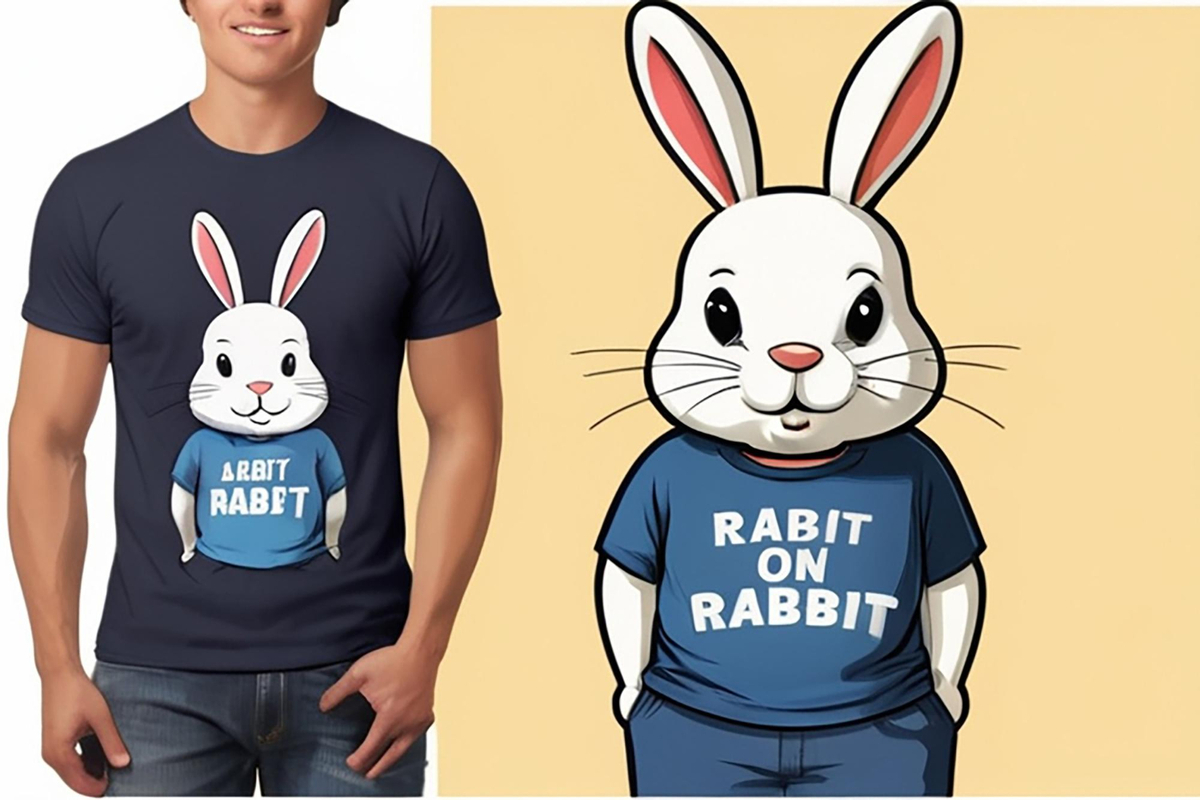DTF transfers, or Direct-to-Film transfers, are revolutionizing the way we think about custom apparel printing. This cutting-edge technique enables artists and entrepreneurs to infuse high-resolution graphics directly onto garments with remarkable ease. For beginners, DTF printing offers an enticing introduction to the world of fabric decoration, combining vibrant visual outputs with user-friendly methods. Through the use of a heat press, this process not only guarantees stunning results but also ensures longevity, making your custom designs last through multiple washes. In this beginner guide, we will delve into everything you need to know about DTF transfers, exploring the essential equipment, and highlighting both the benefits and challenges associated with this innovative printing technique.
Also known as direct-to-film printing, DTF transfers represent a modern approach to customizing apparel that has garnered attention from creators of all levels. This technique allows designs to be printed on a specialized film before being transferred onto various fabrics, leading to exceptionally bright and detailed results. For those exploring the realm of garment decoration, DTF advancements present an excellent option, merging convenience with quality. As you look into the direct film transfer process, remember that it encompasses not just the printing aspect, but also the essential use of a heat press for successful application. This comprehensive overview will guide you through the essentials of the DTF method, equipping you with the knowledge needed to embark on your custom printing journey.
Understanding DTF Printing: The Basics
Direct-to-Film (DTF) printing is revolutionizing the custom apparel industry by providing a method that both beginners and seasoned professionals can utilize. At its core, DTF involves printing high-resolution graphics onto a special film, which are then adhered to fabric using heat and adhesive powder. Unlike traditional printing techniques, DTF allows for vibrant colors and intricate details to be transferred, capturing the imagination of users who wish to create custom clothing. This method not only ensures the aesthetic appeal of the designs but also fosters creativity in apparel customization.
For those eager to explore the world of custom apparel, understanding the principles behind DTF printing is vital. The process begins with the careful preparation of materials, including acquiring a compatible inkjet printer and DTF-specific transfer films. Once you’ve mastered these tools, you can create unique designs with remarkable ease. This accessibility has contributed to DTF’s growing popularity, attracting individuals interested in launching their own apparel lines or simply experimenting with personal wardrobe enhancement.
Essential Equipment for DTF Transfers
The success of DTF transfers hinges on having the right equipment. First and foremost, a quality inkjet printer capable of handling DTF inks is essential. This printer must be equipped to produce crisp designs which are foundational to the transfer process. Secondly, specialized DTF transfer film and hot-melt adhesive powder play critical roles in ensuring that the designs adhere effectively to various fabrics, making them standout options for apparel customization.
In addition to these primary components, aspiring DTF practitioners must invest in a reliable heat press machine. A high-quality heat press will ensure consistent temperature and pressure application, which are crucial for achieving a flawless transfer. Such equipment is fundamental not only for a successful DTF process but also for the longevity of the prints, as subpar machinery can lead to premature fading or peeling.
Advantages of Using DTF Transfers
The advantages of DTF transfers make it an appealing option for anyone entering the world of custom apparel. One major benefit is the versatility that DTF allows; designs can be applied to a wide variety of fabrics including cotton, polyester, and blends without sacrificing quality. This is particularly attractive for those seeking to create unique pieces that stand out in a saturated market of clothing options.
Moreover, DTF printing is renowned for its vibrant colors and durable finishes. Unlike traditional heat transfer methods, DTF prints remain resistant to fading and peeling, even after multiple washes. This durability transforms DTF not only into an artistic expression tool but also a practical solution for apparel brands aiming to create long-lasting custom designs that can withstand the test of time.
Challenges You Might Face with DTF Transfers
Despite its numerous benefits, beginners should be aware of some of the challenges associated with DTF transfers. One such challenge is the initial cost of equipment and materials, which can be considerable when investing in high-quality printers, films, and heat presses. For new entrepreneurs, this upfront investment can seem daunting, but it’s important to view it as a stepping stone towards building a successful custom apparel business.
Another hurdle is the learning curve associated with mastering the perfect settings for temperature and pressure when using your heat press. Achieving optimal results may require testing and tweaking various configurations, which can be frustrating for beginners. However, with persistence and the wealth of online resources available, new users can overcome this obstacle and discover the joy of creating stunning custom garments.
Exploring Current Trends in Custom Apparel
The custom apparel market is seeing an exciting rise in popularity, spurred by a growing demand for unique and personalized clothing. This trend has fueled the DTF printing industry, as more individuals and small businesses are seeking efficient ways to produce custom designs. The proliferation of online platforms and social media has further amplified this demand, allowing users to showcase their creative apparel and connect with potential customers.
As this trend grows, many suppliers are responding by offering kits specifically designed for beginners. These kits, which often include a printer, DTF film, and adhesive powder, simplify the entry into the DTF printing world and make it more accessible. Additionally, with an abundance of instructional resources available online, newcomers have ample guidance to ensure they are equipped to successfully navigate this flourishing market.
Resources for Beginners in DTF Printing
For those just beginning their journey in DTF printing, a variety of resources are available to facilitate learning. Online blogs and dedicated websites present an array of tutorials and guides specifically tailored to newcomers. These platforms offer insights into the practical aspects of DTF printing, helping users understand the nuances of the process and avoid common pitfalls.
Community forums are also invaluable, providing a platform where beginners can connect with seasoned printers. Here, users can ask questions, share experiences, and gain helpful tips from those who have already navigated the challenges of DTF transfers. Additionally, YouTube channels dedicated to DTF techniques often feature visual demonstrations that can significantly streamline the learning process, making it easier to grasp the necessary steps for successful prints.
Frequently Asked Questions
What is the process involved in DTF transfers for custom apparel?
DTF transfers, or Direct-to-Film transfers, involve printing designs onto a special film with DTF inks. After printing, hot-melt adhesive powder is sprinkled over the wet ink and then activated with heat. The film is then placed on the fabric, and a heat press is used to transfer the design. This process ensures vibrant, durable prints suitable for various garments.
What equipment do I need to get started with DTF printing?
To begin with DTF transfers, you will need an inkjet printer compatible with DTF inks, DTF transfer film, hot-melt adhesive powder, and a heat press machine. The heat press should have adjustable temperature and pressure settings to accommodate different types of fabric, ensuring successful transfers.
What are the advantages of using DTF transfers for custom apparel?
DTF transfers are popular for several reasons: they offer versatility across various fabric types, produce high-quality, vibrant prints, ensure durability even after multiple washes, and are relatively user-friendly. This makes DTF printing an excellent choice for beginners entering the custom apparel market.
What challenges might beginners face when working with DTF transfers?
Beginners may encounter challenges such as the initial costs of quality equipment and materials required for DTF transfers. Additionally, there is a learning curve related to adjusting temperature and pressure settings for optimal results, which can take some trial and error to perfect.
How do DTF transfers compare with other printing methods for custom apparel?
DTF transfers offer several benefits compared to other methods like screen printing. They provide vibrant color quality, can be used on a wider range of fabrics, and are generally easier to set up for beginners. Furthermore, DTF prints tend to be more durable and resistant to fading and peeling compared to other transfer methods.
Where can I find resources to learn more about DTF transfers?
Numerous resources are available for beginners interested in DTF printing. Online blogs, tutorials, and community forums offer valuable insights and tips. YouTube channels dedicated to DTF techniques also provide visual demonstrations that can simplify the learning process and help improve your skills.
| Key Aspect | Details |
|---|---|
| Definition | Direct-to-Film (DTF) transfers are a printing method that involves printing designs onto a special film and then transferring them onto fabric. |
| Process Steps | 1. Preparation: Use a compatible inkjet printer and DTF transfer film. 2. Adhesive Application: Apply hot-melt adhesive powder to wet ink. 3. Heat Activation: Use heat to bond adhesive powder to ink. 4. Transfer: Use a heat press to transfer the design onto fabric. |
| Essential Equipment | 1. Inkjet Printer (compatible with DTF ink) 2. DTF Transfer Film 3. Hot-Melt Adhesive Powder 4. Heat Press Machine with adjustable settings |
| Advantages | 1. Versatility: Works on various fabric types. 2. High Quality: Detailed and vibrant prints. 3. Durability: Stands up to multiple wash cycles. 4. User-Friendly: Simple process for beginners. |
| Challenges | 1. Initial Costs: Significant upfront investment for quality equipment. 2. Learning Curve: Need for fine-tuning temperature and pressure settings. |
| Market Trends | Increased demand for custom apparel is fueling growth in the DTF printing market, with more suppliers providing products and resources for beginners. |
| Resources for Beginners | Tutorials, community forums, and YouTube channels focused on DTF techniques can help newcomers effectively learn and troubleshoot. |
Summary
DTF transfers offer a revolutionary way to create custom apparel, allowing beginners to easily create detailed and vibrant designs with durable prints. This innovative printing method combines quality and versatility, making it an ideal choice for hobbyists and emerging entrepreneurs. With the right equipment and resources, anyone can tap into the growing custom apparel market. As you navigate the DTF transfer process, remember to utilize available tutorials and community support to enhance your learning and production success.



